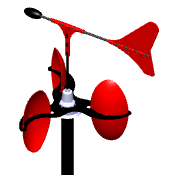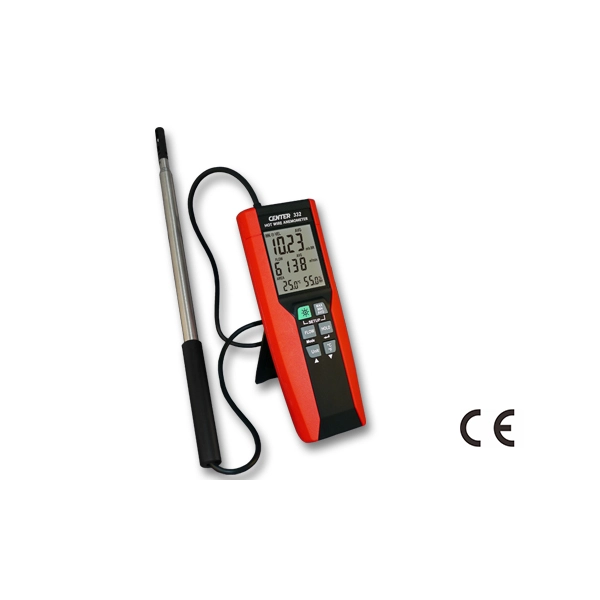All You Required to Know About Anemometers: How They Work, Why They Matter, and Where to Make use of Them
Anemometers, though usually ignored in the world of scientific instruments, play an important duty in different fields, supplying valuable insights into wind rate and air flow patterns. As we dive right into the ins and outs of anemometer modern technology, we will reveal the inner workings of these devices, their importance, and the crucial considerations when choosing the appropriate anemometer for details applications.

Anemometer Essentials
An important instrument made use of to measure wind rate and direction, the anemometer plays an important role in meteorology and various industries. An anemometer generally consists of three or 4 mugs that rotate in the wind, a vane that points into the wind, and sensing units to track the rotations or movements.
There are various kinds of anemometers readily available, consisting of cup anemometers, vane anemometers, hot-wire anemometers, and sonic anemometers, each with its unique attributes and applications. Cup anemometers are typically utilized for standard wind speed measurements, while vane anemometers are chosen for directional dimensions.
Principles of Anemometer Procedure
Structure on the foundational understanding of anemometer fundamentals, the concepts of anemometer operation clarify the auto mechanics behind wind rate and direction dimensions. Cup anemometers, for circumstances, have three or more mugs that capture the wind, causing them to spin faster as the wind speed boosts. Hot-wire anemometers depend on a warmed wire that cools down as wind passes over it, with the rate of cooling identifying the wind speed.
Importance of Anemometers
The significance of anemometers in meteorology and numerous sectors can not be overstated. Anemometers play an important function in gauging wind speed and instructions, giving crucial information for weather condition forecasting, environment research studies, environmental monitoring, and aviation procedures. Meteorologists depend on anemometers to gather precise wind data, helping them understand weather condition patterns, forecast tornados, and problem timely warnings to the general public. In sectors such as construction, agriculture, renewable resource, and maritime procedures, anemometers are utilized to enhance processes, make sure safety and security, and raise performance. As an example, wind ranch operators make use of anemometers to examine wind conditions and optimize power production from wind generators. In the maritime sector, anemometers help ship navigating by offering real-time wind info to captains, assisting them make informed decisions to guarantee risk-free voyages. Overall, anemometers are crucial devices that contribute considerably to security, effectiveness, and educated decision-making in weather forecasting and a large range of markets.
Applications Across Different Industries
In the sustainable energy field, anemometers play a vital role in examining wind problems for wind ranch positionings, making certain my link optimum power manufacturing. Industries like building and mining use anemometers to keep track of wind speeds, critical for safety protocols, particularly when functioning at heights or in open-pit mines where solid winds can posture threats. In agriculture, anemometers help farmers in managing crop splashing by giving real-time information on wind rate to stay clear of drift.

Selecting the Right Anemometer for Your Needs
Selecting the proper anemometer customized to your details needs is crucial for obtaining precise wind rate and instructions dimensions. When selecting an anemometer, take into consideration factors such as the intended application, needed dimension array, ecological problems, and preferred features. For basic objectives, a mug anemometer appropriates for gauging wind speed, while a vane anemometer provides wind direction data. Hot-wire anemometers are suitable for low airspeed dimensions, and ultrasonic anemometers supply high accuracy and toughness.

Conclusion
Finally, anemometers play an essential function in determining wind rate and instructions across different sectors. Recognizing the principles of anemometer procedure is necessary for selecting the right tool for particular requirements. From meteorology to aeronautics, anemometers are vital tools for accumulating precise data and making certain security in various applications. When picking the most appropriate gadget for measuring wind problems., it is crucial to consider the importance of anemometers in order to make informed decisions.
There are various kinds of anemometers available, including cup anemometers, vane anemometers, hot-wire anemometers, and sonic anemometers, each with its distinct attributes and applications. Cup anemometers are frequently used for standard wind rate dimensions, while vane anemometers are favored for directional measurements. Hot-wire anemometers are suitable for low airspeeds, and sonic anemometers are perfect for high-precision dimensions in study and commercial setups.Structure on the fundamental understanding of anemometer basics, the principles of anemometer operation elucidate the mechanics behind wind rate and direction measurements. For general functions, a cup anemometer click here for more is suitable for measuring wind rate, while a vane anemometer provides wind direction information.